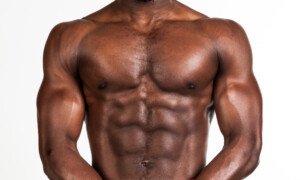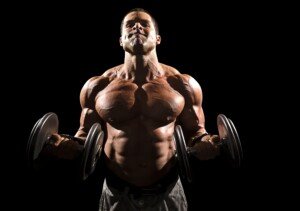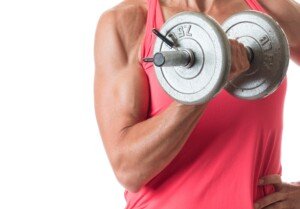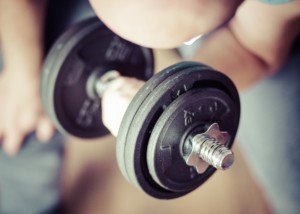
Dumbbell curls vs. barbell curls: Which is better, and what are the pros and cons?
Many of the great bodybuilding champs swear by barbell curls, yet many other bodybuilding legends swear by dumbbell curls.
But let’s look at it this way: Which routine – dumbbell curls or barbell – will better prepare you to have the strength to scoop your arms under a family member who just fainted and pick him or her up?
Of course, deadlift and squat workouts should be included in any strength training program, but in addition, isolated biceps work is important.
Dumbbells, as opposed to barbell work for the biceps, will better prepare you because they allow subtle shifts in hand/wrist and even forearm position while lifting — and this is what would occur if you were lifting a person.

Shutterstock/Mark McElroy
Of course, you need more than strong biceps to scoop something heavy off the floor.
You also need stability and strength in your lower back, plus legs (“Lift with your legs”).
Barbell Curls vs. Dumbbell Curls
Both routines have their virtues, and you should not replace one with the other, even though it’s okay to stick to just one mode for a while when you get tired of the other.
- With dumbbells, you have greater range of motion, since you can bring your arms back further.
- A barbell will get in the way as it makes contact with your front, thus limiting range of motion. Many people don’t like this.
- With dumbbells, you can include wrist movements during the routine. A barbell, which fixes the wrists in place, prevents this.
Dumbbell biceps routines more closely mimic real-life lifting, because in real-life lifting, your wrists are rarely in a fixed position, but rather, in a variable position, sometimes continuously shifting angles.

Shuttersock/Nicholas Piccillo
A barbell also has limitations if all you have is a standard straight bar, because the straight bar has a tendency to strain the wrists for some people during biceps routines.
You can counteract this strain by using dumbbells and rotating your palms inward a bit.
In addition to a standard straight bar is the “E-Z” bar, which is very popular for biceps routines, because the bent nature of the middle portions of the bar allow you to use it with inward palms, eliminating wrist strain.

Shutterstocfk/BLACKDAY
But if you don’t have access to an E-Z bar, you’re stuck with the straight bar.
The preacher curl apparatus can be used for E-Z or straight bar work, and many find this equipment to be very stabilizing to the elbows, as well as very effective at isolating the biceps group.
Dumbbells allow you to do hammer curls, and are also far more convenient to use while in a seated position, expecially angled back.

Everkinetic.com

However, there’s nothing like doing biceps routines with a loaded Olympic bar.
The length of this bar adds a new dimension to the resistance, and many women struggle with an unloaded bar because it’s long and weighs 45 pounds.
Imagine curling one of these with a 25 pound plate on each end.
No science proves dumbbells superior to a bar, nor vice versa. What it ultimately may come down to is what feels better to the athlete. In short, it may all come down to “Do what’s best for YOU.”


























